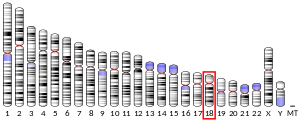| GRP | |||||||||||||||||||||||||||||||||||||||||||||||||||
|---|---|---|---|---|---|---|---|---|---|---|---|---|---|---|---|---|---|---|---|---|---|---|---|---|---|---|---|---|---|---|---|---|---|---|---|---|---|---|---|---|---|---|---|---|---|---|---|---|---|---|---|
 | |||||||||||||||||||||||||||||||||||||||||||||||||||
| |||||||||||||||||||||||||||||||||||||||||||||||||||
| Identifiers | |||||||||||||||||||||||||||||||||||||||||||||||||||
| Aliases | GRP, BN, GRP-10, preproprogastrin releasing peptide | ||||||||||||||||||||||||||||||||||||||||||||||||||
| External IDs | OMIM: 137260; MGI: 95833; HomoloGene: 1580; GeneCards: GRP; OMA:GRP - orthologs | ||||||||||||||||||||||||||||||||||||||||||||||||||
| |||||||||||||||||||||||||||||||||||||||||||||||||||
| |||||||||||||||||||||||||||||||||||||||||||||||||||
| |||||||||||||||||||||||||||||||||||||||||||||||||||
| |||||||||||||||||||||||||||||||||||||||||||||||||||
| Wikidata | |||||||||||||||||||||||||||||||||||||||||||||||||||
| |||||||||||||||||||||||||||||||||||||||||||||||||||
Gastrin-releasing peptide GRP, is a neuropeptide, a regulatory molecule encoded in the human by the GRP gene. GRP has been implicated in a number of physiological and pathophysiological processes. Most notably, GRP stimulates the release of gastrin from the G cells of the stomach.
GRP encodes a number of bombesin-like peptides. Its 148-amino acid preproprotein, following cleavage of a signal peptide, is further processed to produce either the 27-amino acid gastrin-releasing peptide or the 10-amino acid neuromedin C. These smaller peptides regulate numerous functions of the gastrointestinal and central nervous systems, including release of gastrointestinal hormones, smooth muscle cell contraction, and epithelial cell proliferation.
Function
Gastrin-releasing peptide is a regulatory human peptide that elicits gastrin release and regulates gastric acid secretion and enteric motor function. The post-ganglionic fibers of the vagus nerve that innervate bombesin/GRP neurons of the stomach release GRP, which stimulates the G cells to release gastrin.
GRP is also involved in the biology of the circadian system, playing a role in the signaling of light to the master circadian oscillator in the suprachiasmatic nuclei of the hypothalamus.
Furthermore, GRP seems to mediate certain aspects of stress. This is the reason for the observed fact that atropine does not block the vagal effect on gastrin release.
Gene
GRP is located on chromosome 18q21. PreproGRP (the unprocessed form of GRP) is encoded in three exons separated by two introns. Alternative splicing results in multiple transcript variants encoding different isoforms.
Synthesis
PreproGRP begins with signal peptidase cleavage to generate the pro-gastrin-releasing-peptide (proGRP), which is then processed by proteolytic cleavages, to form smaller GRP peptides.
These smaller peptides are released by the post-ganglionic fibers of the vagus nerve, which innervate the G cells of the stomach and stimulate them to release gastrin. GRP regulates numerous functions of the gastrointestinal and central nervous systems, including release of gastrointestinal hormones, smooth muscle cell contraction, and epithelial cell proliferation.
Clinical significance
Gastrin-releasing peptide and neuromedin C, it is postulated, play a role in human cancers of the lung, colon, stomach, pancreas, breast, and prostate.
References
- ^ GRCh38: Ensembl release 89: ENSG00000134443 – Ensembl, May 2017
- ^ GRCm38: Ensembl release 89: ENSMUSG00000024517 – Ensembl, May 2017
- "Human PubMed Reference:". National Center for Biotechnology Information, U.S. National Library of Medicine.
- "Mouse PubMed Reference:". National Center for Biotechnology Information, U.S. National Library of Medicine.
- ^ "Entrez Gene: GRP gastrin-releasing peptide".
- Spindel ER, Chin WW, Price J, Rees LH, Besser GM, Habener JF (September 1984). "Cloning and characterization of cDNAs encoding human gastrin-releasing peptide". Proc. Natl. Acad. Sci. U.S.A. 81 (18): 5699–703. Bibcode:1984PNAS...81.5699S. doi:10.1073/pnas.81.18.5699. PMC 391778. PMID 6207529.
- Spindel ER, Zilberberg MD, Habener JF, Chin WW (January 1986). "Two prohormones for gastrin-releasing peptide are encoded by two mRNAs differing by 19 nucleotides". Proc. Natl. Acad. Sci. U.S.A. 83 (1): 19–23. Bibcode:1986PNAS...83...19S. doi:10.1073/pnas.83.1.19. PMC 322782. PMID 3001723.
- ^ Lebacq-Verheyden AM, Bertness V, Kirsch I, Hollis GF, McBride OW, Battey J (January 1987). "Human gastrin-releasing peptide gene maps to chromosome band 18q21". Somat. Cell Mol. Genet. 13 (1): 81–6. doi:10.1007/BF02422302. PMID 3027901. S2CID 28347998.
- "Neuromedin C". pubchem.ncbi.nlm.nih.gov.
- ^ Merali Z, McIntosh J, Anisman H (October 1999). "Role of bombesin-related peptides in the control of food intake". Neuropeptides. 33 (5): 376–86. doi:10.1054/npep.1999.0054. PMID 10657515. S2CID 22270584.
- Antle MC, Silver R (March 2005). "Orchestrating time: arrangements of the brain circadian clock". Trends in Neurosciences. 28 (3): 145–151. doi:10.1016/j.tins.2005.01.003. ISSN 0166-2236.
Further reading
- Merali Z, McIntosh J, Anisman H (2000). "Role of bombesin-related peptides in the control of food intake". Neuropeptides. 33 (5): 376–86. doi:10.1054/npep.1999.0054. PMID 10657515. S2CID 22270584.
- Baraniuk JN, Lundgren JD, Shelhamer JH, Kaliner MA (1992). "Gastrin releasing peptide (GRP) binding sites in human bronchi". Neuropeptides. 21 (2): 81–4. doi:10.1016/0143-4179(92)90518-2. PMID 1557184. S2CID 40083693.
- Spindel ER, Zilberberg MD, Habener JF, Chin WW (1986). "Two prohormones for gastrin-releasing peptide are encoded by two mRNAs differing by 19 nucleotides". Proc. Natl. Acad. Sci. U.S.A. 83 (1): 19–23. Bibcode:1986PNAS...83...19S. doi:10.1073/pnas.83.1.19. PMC 322782. PMID 3001723.
- Sausville EA, Lebacq-Verheyden AM, Spindel ER, et al. (1986). "Expression of the gastrin-releasing peptide gene in human small cell lung cancer. Evidence for alternative processing resulting in three distinct mRNAs". J. Biol. Chem. 261 (5): 2451–7. doi:10.1016/S0021-9258(17)35956-2. PMID 3003116.
- Lebacq-Verheyden AM, Bertness V, Kirsch I, et al. (1987). "Human gastrin-releasing peptide gene maps to chromosome band 18q21". Somat. Cell Mol. Genet. 13 (1): 81–6. doi:10.1007/BF02422302. PMID 3027901. S2CID 28347998.
- Naylor SL, Sakaguchi AY, Spindel E, Chin WW (1987). "Human gastrin-releasing peptide gene is located on chromosome 18". Somat. Cell Mol. Genet. 13 (1): 87–91. doi:10.1007/BF02422303. PMID 3027902. S2CID 7514856.
- Lebacq-Verheyden AM, Kasprzyk PG, Raum MG, et al. (1989). "Posttranslational processing of endogenous and of baculovirus-expressed human gastrin-releasing peptide precursor". Mol. Cell. Biol. 8 (8): 3129–35. doi:10.1128/MCB.8.8.3129. PMC 363540. PMID 3211139.
- Spindel ER, Chin WW, Price J, et al. (1984). "Cloning and characterization of cDNAs encoding human gastrin-releasing peptide". Proc. Natl. Acad. Sci. U.S.A. 81 (18): 5699–703. Bibcode:1984PNAS...81.5699S. doi:10.1073/pnas.81.18.5699. PMC 391778. PMID 6207529.
- Benya RV, Kusui T, Pradhan TK, et al. (1995). "Expression and characterization of cloned human bombesin receptors". Mol. Pharmacol. 47 (1): 10–20. PMID 7838118.
- Moody TW, Zia F, Venugopal R, et al. (1994). "Corticotropin-releasing factor stimulates cyclic AMP, arachidonic acid release, and growth of lung cancer cells". Peptides. 15 (2): 281–5. doi:10.1016/0196-9781(94)90013-2. PMID 8008632. S2CID 44503352.
- Frankel A, Tsao MS, Viallet J (1994). "Receptor subtype expression and responsiveness to bombesin in cultured human bronchial epithelial cells". Cancer Res. 54 (7): 1613–6. PMID 8137267.
- Lü F, Jin T, Drucker DJ (1996). "Proglucagon gene expression is induced by gastrin-releasing peptide in a mouse enteroendocrine cell line". Endocrinology. 137 (9): 3710–6. doi:10.1210/en.137.9.3710. PMID 8756537.
- Bertenshaw GP, Turk BE, Hubbard SJ, et al. (2001). "Marked differences between metalloproteases meprin A and B in substrate and peptide bond specificity". J. Biol. Chem. 276 (16): 13248–55. doi:10.1074/jbc.M011414200. PMID 11278902.
- Lambeir AM, Durinx C, Proost P, et al. (2001). "Kinetic study of the processing by dipeptidyl-peptidase IV/CD26 of neuropeptides involved in pancreatic insulin secretion" (PDF). FEBS Lett. 507 (3): 327–30. doi:10.1016/S0014-5793(01)02982-9. hdl:10067/366910151162165141. PMID 11696365. S2CID 26891876.
- Mason S, Smart D, Marshall IC, et al. (2002). "Identification and characterisation of functional bombesin receptors in human astrocytes". Eur. J. Pharmacol. 438 (1–2): 25–34. doi:10.1016/S0014-2999(02)01268-2. PMID 11906707.
- Carroll RE, Matkowskyj K, Saunthararajah Y, et al. (2002). "Contribution of gastrin-releasing peptide and its receptor to villus development in the murine and human gastrointestinal tract". Mech. Dev. 113 (2): 121–30. doi:10.1016/S0925-4773(02)00032-1. PMID 11960700. S2CID 15515339.
- Uchida K, Kojima A, Morokawa N, et al. (2003). "Expression of progastrin-releasing peptide and gastrin-releasing peptide receptor mRNA transcripts in tumor cells of patients with small cell lung cancer". J. Cancer Res. Clin. Oncol. 128 (12): 633–40. doi:10.1007/s00432-002-0392-8. PMID 12474049. S2CID 23764903.
- Strausberg RL, Feingold EA, Grouse LH, et al. (2003). "Generation and initial analysis of more than 15,000 full-length human and mouse cDNA sequences". Proc. Natl. Acad. Sci. U.S.A. 99 (26): 16899–903. Bibcode:2002PNAS...9916899M. doi:10.1073/pnas.242603899. PMC 139241. PMID 12477932.
- Schneider J, Philipp M, Velcovsky HG, et al. (2003). "Pro-gastrin-releasing peptide (ProGRP), neuron specific enolase (NSE), carcinoembryonic antigen (CEA) and cytokeratin 19-fragments (CYFRA 21-1) in patients with lung cancer in comparison to other lung diseases". Anticancer Res. 23 (2A): 885–93. PMID 12820318.
External links
- Gastrin-Releasing+Peptide at the U.S. National Library of Medicine Medical Subject Headings (MeSH)
- Nosek TM. "Section 6/6ch2/s6ch2_35". Essentials of Human Physiology. Archived from the original on 2016-03-24.
| Hormones | |||||||||||||||||||||||||||
|---|---|---|---|---|---|---|---|---|---|---|---|---|---|---|---|---|---|---|---|---|---|---|---|---|---|---|---|
| Endocrine glands |
| ||||||||||||||||||||||||||
| Other |
| ||||||||||||||||||||||||||




